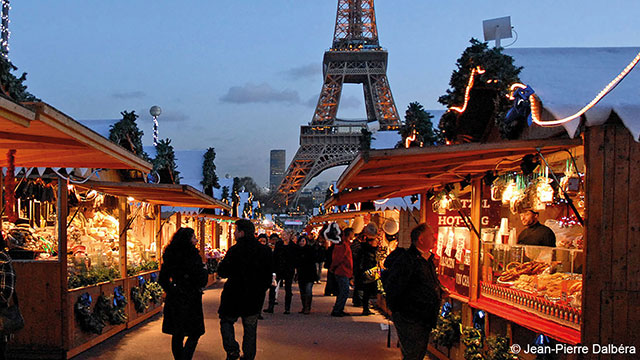La fête de Noël
Some French traditional goodies to look out for on the Christmas markets.
With Christmas just around the corner, students visiting France will be enjoying a visit to a traditional Christmas market. Here are some of the goodies you might find, and the traditions associated with them.
The French take Christmas seriously. So much so that back in the 1960s it became enshrined in law that all letters written to Santa had to receive a postcard in reply! A traditional French market is an Aladdin’s cave for anyone wanting to learn about French Christmas traditions. Among the many chalets at the market you’ll find gifts, decorations, food and drink to celebrate the festive season. Here are just a few of the many traditional items to look out for:
Nativity Figures (Santons)
There’s a lot more to the traditional French nativity display than Mary, Joseph, baby Jesus and a few cows and sheep. You’ll find figures of bakers, greengrocers, butchers and local dignitaries as well. These small terracotta figurines are known as santons, or little saints, and are especially popular in Provence. They originally appeared during the French Revolution when the churches were closed, and their life-sized nativity displays were banned, so people started recreating small nativity scenes in their own homes.
Food
Traditionally, the French, like many Europeans, had their main Christmas meal on Christmas eve. It’s known as réveillon from the French word réveil (wake) because it involves everyone staying awake until well after midnight. In recent times the main meal has moved to Christmas Day which is a public holiday and easier for family members to get together. A traditional Christmas meal starts with oysters, foie gras and smoked salmon, followed by turkey, goose or lobster. For dessert there’s a traditional cake shaped as a yule log, all of which is washed down with wine or champagne, or both.
The Thirteen Desserts of Christmas (Les Treize Desserts de Noël)
In Provence they also have the Thirteen Desserts, so called because they represent Jesus and his twelve disciples. These desserts comprise candied fruits, white nougat (symbolising good), black nougat (symbolising evil), fresh fruit, nuts and biscuits, depending on family tradition. These are usually eaten on Christmas Eve before heading off to midnight mass.
Cup Cakes
Bredala or bredele are biscuits or small cupcakes, originally from the Rhine region – Alsace and Moselle - made from butter, cinnamon, nuts or anise. There are many different recipes according to region and family tradition.
Chestnuts (Marrons glacés)
These chestnuts, candied in sugar syrup and glazed, come from the south of France and northern Italy and date back to the court of Louis XIV at Versailles towards the end of the 17th century.
Yule Log (Bûche de Noël)
These are traditionally made from Italian sponge cake filled with buttercream flavoured with coffee or chocolate. The log represents the wooden logs burned throughout the festive season.
The Kings’ Cake (La galette des Rois)
This is eaten on January 6 to celebrate the visit of the three kings to the infant Jesus. The cake is made of puff pastry, butter and ground almonds and contains a small plastic trinket known as a “fève” (originally a dried bean). Tradition has it that the youngest member of the family sits under the table and tells whoever is cutting the cake who gets which piece. The person who gets the slice with the trinket gets to wear the paper crown (which comes with the cake) and to name their king or queen from the assembled company.
PGL trips to France in winter are an ideal introduction to French language and culture at this exciting and magical time of year. Find out more here if you’re a secondary school or here if you’re a primary school.
 MyPGL
MyPGL 0333 321 2100
0333 321 2100




